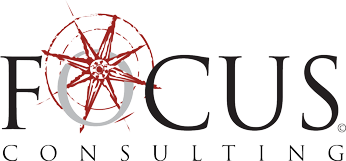
Design Matters: The Art of Intersection Design
Design Matters: The Art of Intersection Design
We sat down with Jason Watson, project manager of the FOCUS Transportation Department, to learn more about the thinking behind intersection design and why these everyday spaces are so important to how our communities move. “Obviously, we don’t want people getting hurt,” Jason began. “But anytime there’s an accident it causes congestion up and down the streets. It doesn’t just affect the people in the crash. It delays hundreds or even thousands of other drivers.”
That is why safety sits at the center of intersection design. Most accidents happen where roads meet, making intersections a key focus for engineers who want to improve safety and efficiency. When intersections work well, traffic moves smoothly. When they do not, everyone feels it.
Roundabouts versus Signalized Intersections
For Jason and his team, every design starts with three goals: safety, efficiency, and traffic flow. Another factor they’ve been emphasizing is air quality. “The more you can keep cars moving and not stopping and starting, the better it is for emissions,” Jason said. “Different intersection types can help keep that flow going. A roundabout for example, allows cars to keep moving if the way is clear.” Roundabouts are becoming more common for a reason. They tend to slow cars down before they enter, reducing the number and severity of crashes. They also have fewer “conflict points” where vehicles can collide. “At a typical intersection, there are about thirty-two conflict points,” Jason explained. “At a roundabout, there are eight. That means fewer chances for accidents.”
Roundabouts have tradeoffs. They cost more to build and take up more space than traffic signals. On the other hand, they often have lower maintenance costs and fewer equipment failures. “Signals have wiring and lights that need constant attention,” Jason said. “Roundabouts mostly need pavement upkeep every couple of decades.”
Innovation in Utah
Jason points to Utah as a leader in trying new intersection designs. The Utah Department of Transportation has used creative layouts like diverging diamond interchanges and continuous flow intersections to manage traffic in high-growth areas. “They are not afraid to test new ideas,” Jason said. “They run models to see if they work and they adjust when they need to.” Although FOCUS has not yet designed some of the most complex intersection types, the transportation team frequently works on both signals and roundabouts across the state. “It’s probably a fifty-fifty split,” Jason said. “Some of our intersections are in new developments, and others are part of larger roadway projects.”
As Utah continues to grow, cities are thinking more about long-term traffic solutions. Engineers run signal warrant analyses to decide when intersections should be upgraded from stop control to full signals. Many cities also prepare transportation master plans that identify where signals, roundabouts, and other intersection types will eventually go. “At first, a new intersection might just have stop signs,” Jason said. “Once traffic builds up, it may meet the criteria for a signal. The planning helps cities prepare for that.”
Looking ahead, Jason believes that improving signal timing and coordination could have a big impact. “We can’t just keep widening roads forever,” he said. “Coordinating signals along major streets like State Street can make a huge difference in keeping traffic moving.” For Jason, the most rewarding part of his work is seeing those designs in action. “It’s cool when you go back to a project years later and traffic is still flowing well,” he said. “That’s when you know the design worked.”
To partner with FOCUS Engineering & Surveying, contact our team at info@focus-es.com or (801) 352-0075.
